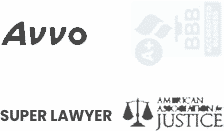Falls can happen suddenly and have life-changing impacts. According to the Centers for Disease Control (CDC), 1 out of 5 falls causes a serious injury such as broken bones or a head injury.
While falls can happen anywhere, they occur more frequently in some locations. Being aware of the dangers can be a protection. Where your fall occurred may also determine who may be liable for your injury.
If you have had a slip-and-fall accident, it is important to understand your rights, including that you may be entitled to receive compensation. To ensure the best possible compensation for you and your family, trust the experts.
With decades of experience, Kiley Law Group can get you the most compensation possible. Contact us today for your free consultation.
Common Locations Where Slip-and-Fall Accidents Occur
Slip-and-fall accidents are extremely common. According to the National Floor Safety Institution (NHSI), falls account for over 8 million hospital emergency room visits, or more than one-fifth of all visits every year.
The location of your fall may help determine who is liable for your injury. It is also important to identify any hazard that may have caused – or contributed to – your fall.
Examples of common locations for slip-and-fall accidents include:
- Stairways: These can be dangerous by design. If steps are too steep or narrow, it can be difficult to navigate them safely. Broken railings also contribute to unsafe stairways.
- Sidewalks: When sidewalks are improperly maintained, they can crack or become uneven.
- Grocery stores, restaurants, malls, and other shops: Wet floors may not be marked, spills may not be cleaned up, and debris may be left on the floor. Floors may be freshly cleaned or waxed. All of these mistakes can result in a fall.
- Workplace: Both offices and job sites can have hazards such as wet floors and damaged flooring.
- Decks: The finish on outdoor spaces can be slippery. If not properly maintained, wooden decks can rot and become uneven.
- Parking lots: If the pavement becomes uneven or lighting is insufficient, you could slip and fall in a parking area
- Condominium or apartment complexes: A lack of care and maintenance standards in common areas can pose various hazards.
- Elevators or escalators: When these are not maintained, they can stop and start suddenly.
- Nursing home: The elderly are at greater risk of falls. Neglect on the part of the nursing home staff or unsafe living conditions can lead to slip-and-fall accidents. According to NHSI, over 60 percent of nursing home residents will fall each year.
What to Do After a Slip-and-Fall
After we fall, especially in public, most people are embarrassed and may disregard what happened. However, there are a few simple steps we should take to ensure you get the help you need and the compensation you deserve.
Steps to take after a fall:
- Get medical help for your injuries: Your health should be your main concern. Get medical attention and document your injuries. Keep receipts of any medical expenses.
- Report the accident: Let the manager or property owner know about your fall. If possible, make the report in writing and keep a copy.
- Document the accident: Take photographs of where you fell, the surrounding environment, and your injuries. Write down details about your fall while your memory is fresh. Obtain any witnesses’ contact information.
- Contact a lawyer: Do this as soon as possible after your fall. Do not hesitate – contact us today.
Dealing with property owners and insurance companies while caring for your injuries can be stressful, but you can let Kiley Law Group take on the burden of seeking compensation on your behalf. We can guide you through the process, as we have cared for thousands of other clients.
Why the Location of a Fall Matters to You
All of us have a responsibility to maintain our properties in a safe manner. Legally, this concept is known as “duty of care.” Business owners have an even greater responsibility to maintain safe conditions on their properties, as these are typically open to the public. If they did not maintain safe conditions, then they may be liable for your fall and any related costs or damages.
Because of these facts, where your fall happened and the hazards that existed at the time of your fall are vital factors. These can establish who is at fault for your accident.
To prove fault, you must demonstrate three things:
- The property owner failed to maintain his or her property in a reasonably safe condition
- The hazard(s) existed on the property and caused or contributed to your fall
- The property owner was on notice that such a defect existed and had sufficient time to correct the hazard
It’s a challenge to establish that a property owner had notice of an existing hazard. The law allows for notice to be proven in two ways: actual notice and constructive notice.
Actual notice
Actual notice means that a property owner knew the hazard existed. In many cases, this can be difficult to prove. Those who may be at fault do not want to admit that they had notice and so other evidence must be obtained. Since actual notice is difficult to obtain, many cases depend on a second kind of notice.
Constructive notice
Constructive notice means that a property owner should reasonably have been aware that a hazard existed. For example, if a spill is left on the floor for a long period of time, the law states that a property owner should have known and done something about it. If a property owner caused the defective condition, this is also considered to be constructive notice.
Establishing fault and proving it in a court of law is a challenging process. To ensure the largest settlement for your family, you need an experienced attorney on your side.
Trust Kiley Law Group. We have a proven track record of recovering more than $1 billion in compensation for our clients.
Important Factors in Establishing Fault
Certain factors can affect the liability for your fall, such as Violation of Statute. If it can be proven that a property owner or another party violated a law or standard, this may be evidence of negligence.
For example, a property owner may cut corners and violate a building code. The business is then liable for any injury as a result of that violation. The same thing is true if a property owner violates a safety law.
In other cases, it can be proven that a property owner acted recklessly, or even intentionally, and caused your fall. If so, he or she may be liable to pay punitive damages.
On the other hand, property owners will not readily accept fault for your slip-and-fall. They may use a variety of tactics to try and prove an accident was your fault and limit your financial compensation.
Property owners may argue that:
- The dangerous condition should have been obvious
- Sufficient warnings were given
- The victim was wearing inappropriate footwear
- The victim was distracted
Do not be intimidated by their arguments. Even if you are partly at fault, you may still be entitled to compensation. Many states, including Massachusetts, have modified comparative negligence laws. These dictate that a victim’s injuries will be reduced according to the percentage of the fault. If a victim is 10 percent responsible, then that person may receive 10 percent less compensation.
In order to fight these tactics by property owners, fault must be clearly established. However, in most cases, establishing fault is not easy or clear-cut. You need an attorney who can clearly establish fault and prove it in a court of law if necessary.
Kiley Law Group has helped thousands get the compensation they deserve. At times, we can get you the compensation you deserve in a quick settlement. But if property owners or insurers refuse to accept responsibility, we have the experience to take your case to trial.
Take Action to Protect Your Rights
Even more significant than where you fell is what you do now. The challenges of proving liability and getting the settlement can feel overwhelming. You do not need to do this alone. Trust a legal team with experience and a proven track record of results to fight for you and your family.
The Boston Herald Sunday Magazine referred to Tom Kiley, founder of our law firm, and made this comment: “In the high stakes game of personal injury law, Boston Attorney Thomas Kiley is known as The Million-Dollar Man.”
For 40 years and thousands of clients, Kiley Law Group has built up a record of obtaining large settlements for our clients from corporations and insurance companies. For instance, consider some testimonials of how we have helped clients just like you.
You may not have a million-dollar case on your hands, but you need a firm that will pursue your case with passion and purpose and get you the justice you deserve. Kiley Law Group can do all of this and more for you.
We offer free, no-obligation consultations. Call us today at (888) 435-1321 to learn how we can help you at this difficult time.


